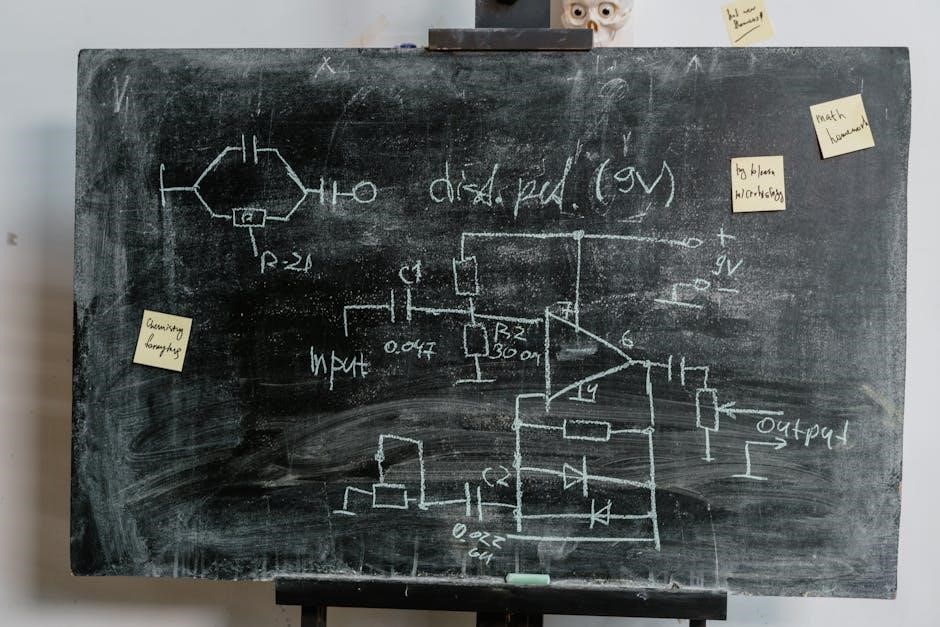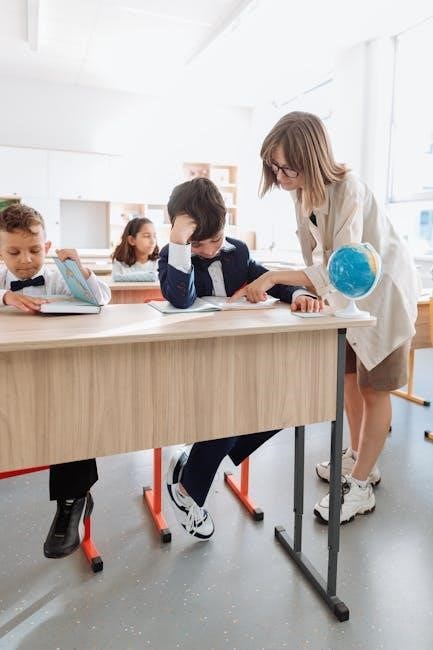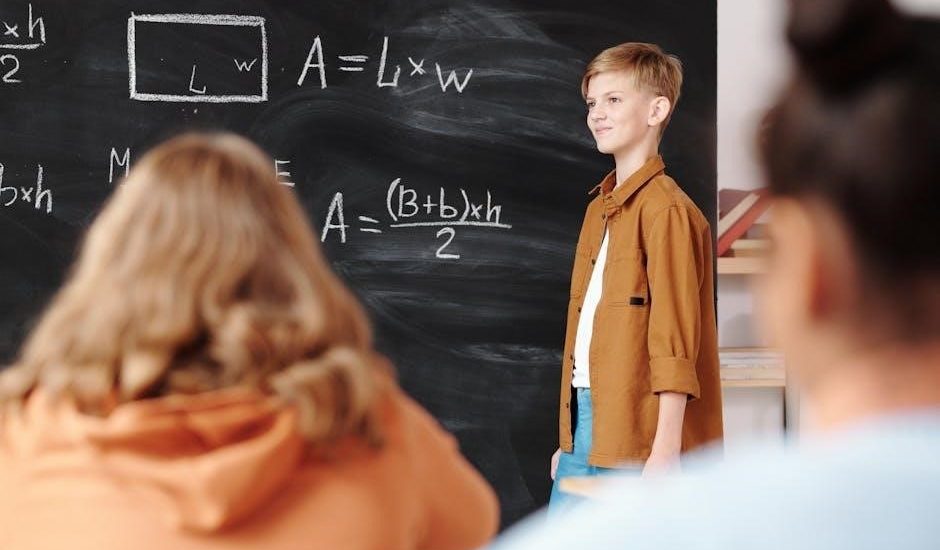The fundamentals of instruction are essential principles that form the basis for successful teaching across various subjects and student levels. These principles enhance an educator’s capacity to create and deliver effective lessons. A solid understanding dramatically improves instruction and learning outcomes for students of all ages.
Definition of Learning
Learning is defined as a change in behavior, resulting from experience and practice. It signifies a relatively permanent shift in an individual’s actions, knowledge, and attitudes. This modification is not merely a temporary reaction but rather an enduring alteration in how someone approaches situations. Fundamentally, learning is the acquisition of new skills or the refinement of existing ones, leading to improved performance.
This transformative process is central to personal growth and adaptation. It enables individuals to navigate their environment more effectively, solve problems, and achieve their goals. Learning encompasses various forms, including cognitive, affective, and psychomotor domains, each contributing to holistic development. Effective instruction aims to facilitate this behavioral change by providing meaningful experiences and opportunities for practice. Ultimately, the definition of learning underscores its importance as a dynamic and continuous journey of self-improvement.
Characteristics of Learning
Learning has several key characteristics that define its nature. Primarily, learning is purposeful, driven by an individual’s goals and motivations, making it more effective when aligned with personal interests. Secondly, learning is a result of experience, emphasizing the role of active engagement and real-world application in knowledge acquisition.

Thirdly, learning is multifaceted, involving cognitive, emotional, and social aspects, contributing to a well-rounded understanding. It is also an active process, requiring active participation and critical thinking from the learner. Furthermore, learning is unique to individuals and their past experiences. This is why most instruction follows the building block concept, combining smaller concepts to apply them to larger applications. These characteristics highlight the importance of creating engaging and relevant learning environments that cater to diverse needs and encourage active participation.
Purposeful Learning
Purposeful learning is characterized by the learner’s clear understanding of the objectives and relevance of the material. When individuals recognize the value and intended outcomes of their learning experiences, they are more motivated and engaged in the process. Knowing the objective of each period of instruction gives meaning and interest to the learner, as well.
This sense of purpose fosters a deeper connection with the subject matter, encouraging learners to actively seek knowledge and apply it effectively. Instructors can promote purposeful learning by explicitly stating learning goals, connecting content to real-world applications, and allowing learners to pursue topics aligned with their interests. By establishing clear objectives, educators empower learners to take ownership of their education. This focused approach enhances comprehension and retention.
Learning as a Result of Experience
Learning is fundamentally shaped by experience. Knowledge acquisition and skill development stem from engaging with the world, encountering new situations, and reflecting on the outcomes. To promote purposeful learning, we should connect content to real-world applications, and allowing learners to pursue topics aligned with their interests.

This experiential approach emphasizes active participation and the application of learned concepts in practical contexts. Learners construct meaning by interacting with their environment, testing hypotheses, and adapting their understanding based on the results. Instructors can facilitate this process by providing opportunities for hands-on activities, simulations, and problem-solving tasks. By grounding learning in real-world experiences, educators foster deeper comprehension and the ability to transfer knowledge to novel situations.
Multifaceted Learning
Learning is not a singular, linear process but rather a multifaceted endeavor involving various cognitive, emotional, and social dimensions. It encompasses acquiring knowledge, developing skills, shaping attitudes, and fostering critical thinking. Effective instruction recognizes and addresses these multiple facets, creating learning experiences that cater to diverse needs and preferences.
A multifaceted approach incorporates a range of teaching methods, instructional materials, and assessment strategies to engage learners on different levels. It acknowledges that individuals learn in unique ways and at varying paces. Instructors should be adaptable, using a variety of methods like lectures, group learning, and discussions with instructional aids (audio/visual and handouts) to cater to diverse learning styles. By embracing the complexity of learning, educators can create a more engaging, enriching, and impactful educational experience for all students. This holistic approach promotes deeper understanding and lasting retention.
Active Process in Learning
Learning is not a passive reception of information but an active process where learners engage with the material, construct their understanding, and integrate new knowledge with their existing framework. Effective instruction fosters active participation, encouraging students to ask questions, explore concepts, and apply their learning in meaningful ways. Active learning strategies promote deeper understanding and retention.
Instructors can facilitate active learning through various techniques, such as group discussions, problem-solving activities, and hands-on projects. These approaches encourage students to react, respond, and not simply be present during the instruction. Creating opportunities for students to teach each other or present their findings can also enhance active involvement. Active learning transforms students from passive recipients to active participants, leading to a more engaging, effective, and memorable learning experience. It is through this active participation that knowledge transforms into practical application.
Laws of Learning
The laws of learning are fundamental principles that describe how individuals acquire and retain new knowledge and skills. These laws provide a framework for instructors to design effective learning experiences. Recognized laws include readiness, exercise, effect, primacy, intensity, and recency. Understanding and applying these laws can significantly improve the effectiveness of instruction.

These laws are not unique to any discipline; they apply broadly to learning any new hobby or job. Studying applied educational psychology underlies these laws and provides a theoretical basis for instructional methods. Instructors who incorporate these principles create environments that optimize learning by tapping into how the human brain processes and retains information. Therefore, awareness of these laws is crucial for anyone involved in facilitating learning, as they provide a pathway to more impactful and enduring educational outcomes. Understanding these laws is pivotal for fostering effective instruction.
Readiness
Readiness, in the context of learning, refers to a student’s preparedness to learn, encompassing physical, mental, and emotional states. Learners must possess the necessary background knowledge, skills, and motivation to effectively engage with new material. When students are ready, they are more receptive and can assimilate information more efficiently, making the learning process smoother and more enjoyable. If a student is not ready, learning can be frustrating and ineffective, potentially leading to discouragement and a negative attitude towards the subject matter.

Instructors should gauge student readiness before introducing new concepts, adapting their teaching methods to meet individual needs. Creating a supportive environment fosters readiness, ensuring students feel comfortable asking questions and participating actively. Assessing prior knowledge helps tailor instruction, building on existing understanding. By addressing any gaps and fostering a positive mindset, instructors can significantly enhance student readiness, paving the way for successful learning experiences.
Exercise
The principle of exercise in learning underscores the importance of repetition and practice in solidifying knowledge and skills. Consistent and deliberate practice strengthens the connections in the brain, making recall easier and performance more fluid. Simply put, what is practiced becomes easier to remember and execute. This principle highlights the need for learners to actively engage with the material through various exercises, drills, and application-based activities.
Instructors play a vital role in designing effective exercises that reinforce learning objectives. These exercises should be varied and engaging to maintain student interest and prevent monotony. Spaced repetition, where practice sessions are strategically spaced out over time, is particularly effective in promoting long-term retention. By incorporating regular exercise and practice into the learning process, educators can help students develop mastery and confidence in their abilities. The more a student practices a skill the better they become.

Effect
The law of effect in learning emphasizes that behaviors followed by pleasant consequences are more likely to be repeated, while those followed by unpleasant consequences are less likely to occur. In an instructional setting, this means that providing positive reinforcement and feedback can significantly enhance student motivation and learning outcomes. When learners experience success and feel a sense of accomplishment, they are more inclined to engage with the material and persist in their efforts.
Instructors should strive to create a learning environment where students feel supported and encouraged. Providing constructive feedback, recognizing achievements, and celebrating successes can all contribute to a positive learning experience. Conversely, avoiding punishment or negative reinforcement can help prevent students from developing a negative association with learning. By understanding and applying the law of effect, educators can foster a learning environment that promotes engagement, motivation, and ultimately, greater learning success. Positive experiences reinforce learning.
Primacy
The principle of primacy underscores the significance of the first impression in learning. What is learned first often creates a strong, almost indelible impression that is difficult to erase or alter. This highlights the importance of ensuring that the initial instruction is accurate, clear, and engaging. If a learner’s first exposure to a concept is flawed or confusing, it can create lasting misconceptions that hinder future learning. Therefore, instructors should meticulously plan the introductory phases of their lessons to establish a solid foundation of knowledge.
In practice, this means presenting information in a logical sequence, starting with the fundamental concepts and gradually building towards more complex ideas. Using real-world examples and relatable scenarios can help students grasp the initial concepts more easily. The instructor should be aware that it is very difficult to correct anything learned first!
Intensity
The law of intensity suggests that vivid, dramatic, or exciting learning experiences are more likely to be remembered and retained than dull or routine ones. When instruction is intense, it captures the learner’s attention and stimulates their senses, leading to deeper processing and enhanced recall. This doesn’t necessarily mean making every lesson a theatrical performance, but rather incorporating elements that create a memorable learning environment. The instructor must use vivid examples.
Techniques such as simulations, role-playing, or hands-on activities can significantly increase the intensity of a learning experience. Visual aids, multimedia presentations, and real-world case studies can also contribute to a more engaging and memorable learning process. An instructor who can create a sense of excitement and relevance around the subject matter can greatly improve student motivation and learning outcomes. It is very important to keep the student alert and engaged!
Recency
The law of recency states that things most recently learned are best remembered. Information acquired recently is more accessible in memory compared to older information, which may fade over time. Instructors can leverage this principle by summarizing key points at the end of a lesson, conducting regular reviews, and providing opportunities for students to practice newly acquired skills shortly after learning them. Brief quizzes, quick recaps, and immediate application exercises can reinforce recent learning and improve retention.

Furthermore, the law of recency highlights the importance of strategically sequencing learning activities. Placing the most crucial information or skills towards the end of a lesson can increase the likelihood that students will remember them. Regular review sessions, spaced repetition techniques, and opportunities to apply recently learned material in practical scenarios can all help to strengthen memory and prevent forgetting. It is important to reinforce learning, to make it count.
Levels of Learning
Learning progresses through distinct levels, each representing a deeper understanding and application of knowledge. These levels are rote, understanding, application, and correlation. Recognizing these levels allows instructors to tailor their teaching methods to facilitate progression. Rote learning involves memorization without comprehension, a foundational but limited level.
Understanding builds upon rote by grasping the meaning and relationships between concepts. Application involves using knowledge and understanding to solve problems and complete tasks. Correlation is the highest level, where learners can connect new knowledge to prior learning and see its relevance across various contexts. Effective instruction guides learners through these levels, fostering a comprehensive and integrated understanding of the subject matter. Teachers must be aware of learning levels.

By understanding these levels, instructors can better assess student progress and adjust their teaching strategies. Moving students from rote memorization to true understanding and application ensures a deeper, more meaningful learning experience.
Rote
Rote learning represents the most basic level of learning, characterized by memorization without comprehension. At this stage, learners can repeat information verbatim but lack a true understanding of its meaning or application. While rote learning has its place in acquiring foundational knowledge, it is insufficient for developing higher-order thinking skills.
For example, reciting multiplication tables without understanding the underlying mathematical principles exemplifies rote learning. It can be a stepping stone to understanding, but reliance on rote memorization alone limits the learner’s ability to apply knowledge in new situations or solve complex problems. Instructors should strive to move students beyond rote learning by incorporating activities.
These activities should promote understanding and application, such as problem-solving, discussions, and real-world examples. While useful for memorizing facts, dates, or formulas, rote learning should not be the ultimate goal. The goal is to cultivate genuine understanding and the ability to use information effectively.
Understanding
Moving beyond rote memorization, understanding signifies a deeper level of learning where the learner comprehends the meaning and relationships between concepts. At this level, students can explain information in their own words, summarize key ideas, and connect new knowledge to prior learning. Understanding involves grasping the “why” behind the “what,” enabling learners to see the bigger picture.
For example, understanding the principles of aerodynamics involves more than memorizing Bernoulli’s principle. It means grasping how air pressure differences generate lift, allowing aircraft to fly. This level of learning requires active engagement, critical thinking, and the ability to make connections between different pieces of information.
Instructors can foster understanding by using various teaching methods. These methods include discussions, demonstrations, and real-world examples. Encouraging students to ask questions, explain concepts to each other, and apply their knowledge in practical scenarios is also helpful. Understanding is a crucial step toward applying knowledge effectively and solving complex problems.

Application
Application, as a level of learning, involves the ability to use learned knowledge and skills in new and practical situations. It demonstrates a learner’s capacity to transfer theoretical understanding into tangible actions and problem-solving. This level goes beyond simply knowing information; it requires the learner to actively employ it.
For example, a student who understands the principles of algebra demonstrates application when they can solve algebraic equations in a physics problem. This involves identifying the relevant algebraic concepts, manipulating equations, and arriving at a correct solution. Application requires critical thinking, decision-making, and the ability to adapt learned skills to different contexts.

Instructors can promote application by providing opportunities for students to practice using their knowledge in real-world scenarios. This can include simulations, case studies, projects, and hands-on activities. Feedback, reflection, and opportunities for revision are essential to improving application skills. Effective application solidifies learning and prepares learners for future challenges.
Correlation
Correlation, as the highest level of learning, goes beyond understanding and application, requiring learners to connect new knowledge with previously learned concepts across different subjects or areas of expertise. This involves seeing relationships, patterns, and dependencies that might not be immediately obvious, fostering a holistic understanding of the material.
For instance, a student studying history might correlate historical events with economic principles to understand the underlying causes and consequences of those events. They can also correlate historical events with current events to draw parallels and learn from the past. Correlation promotes critical thinking, analytical skills, and the ability to synthesize information from diverse sources.
Instructors can encourage correlation by presenting interdisciplinary projects, encouraging students to explore connections between different subjects, and facilitating discussions that integrate various perspectives. By achieving correlation, learners develop a deeper, more meaningful understanding of the world around them, preparing them for complex problem-solving and lifelong learning.





